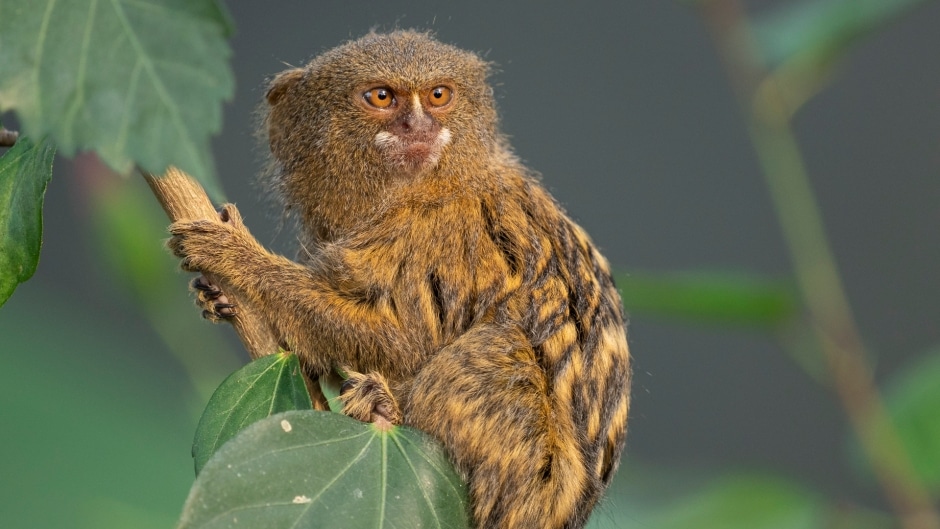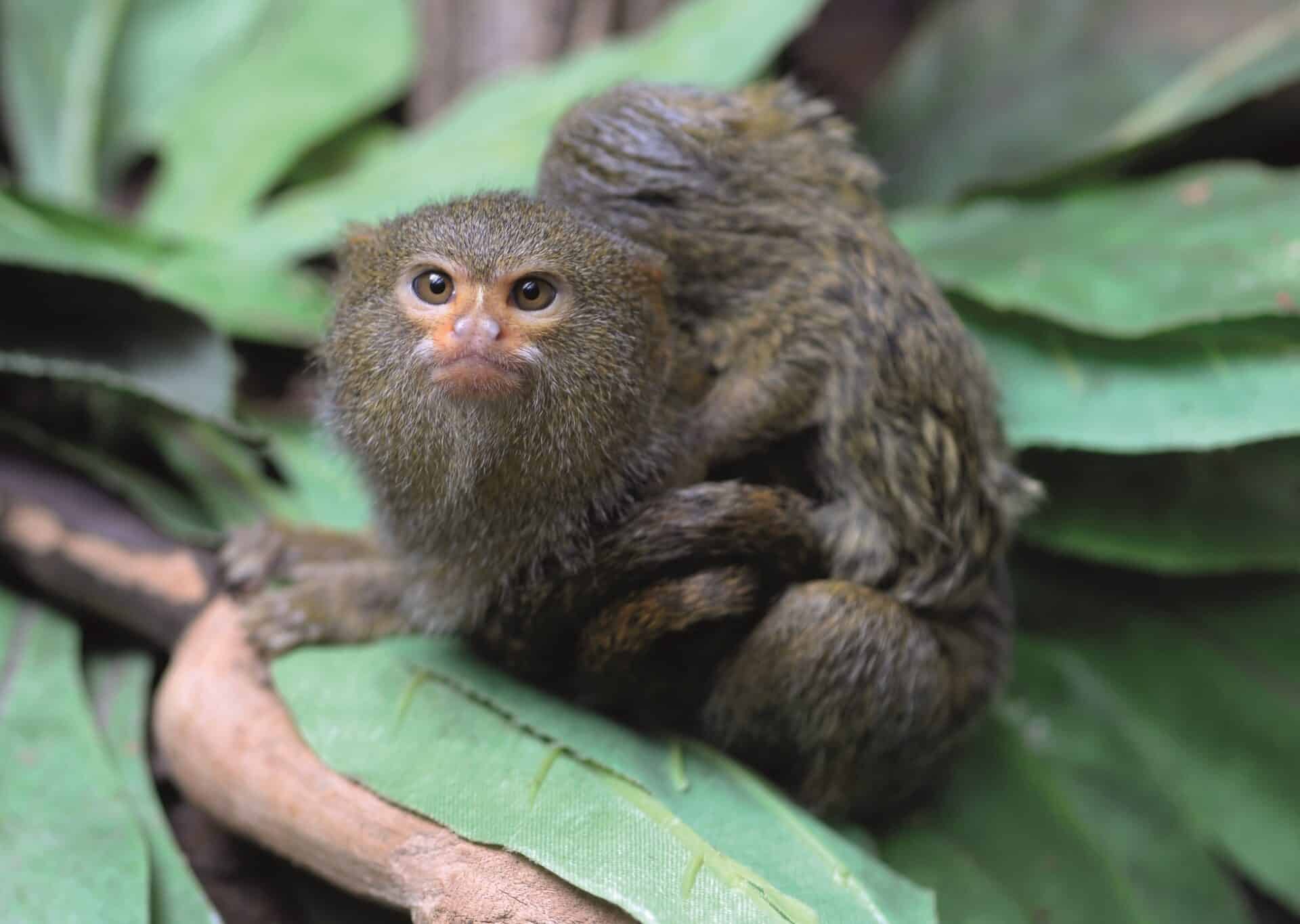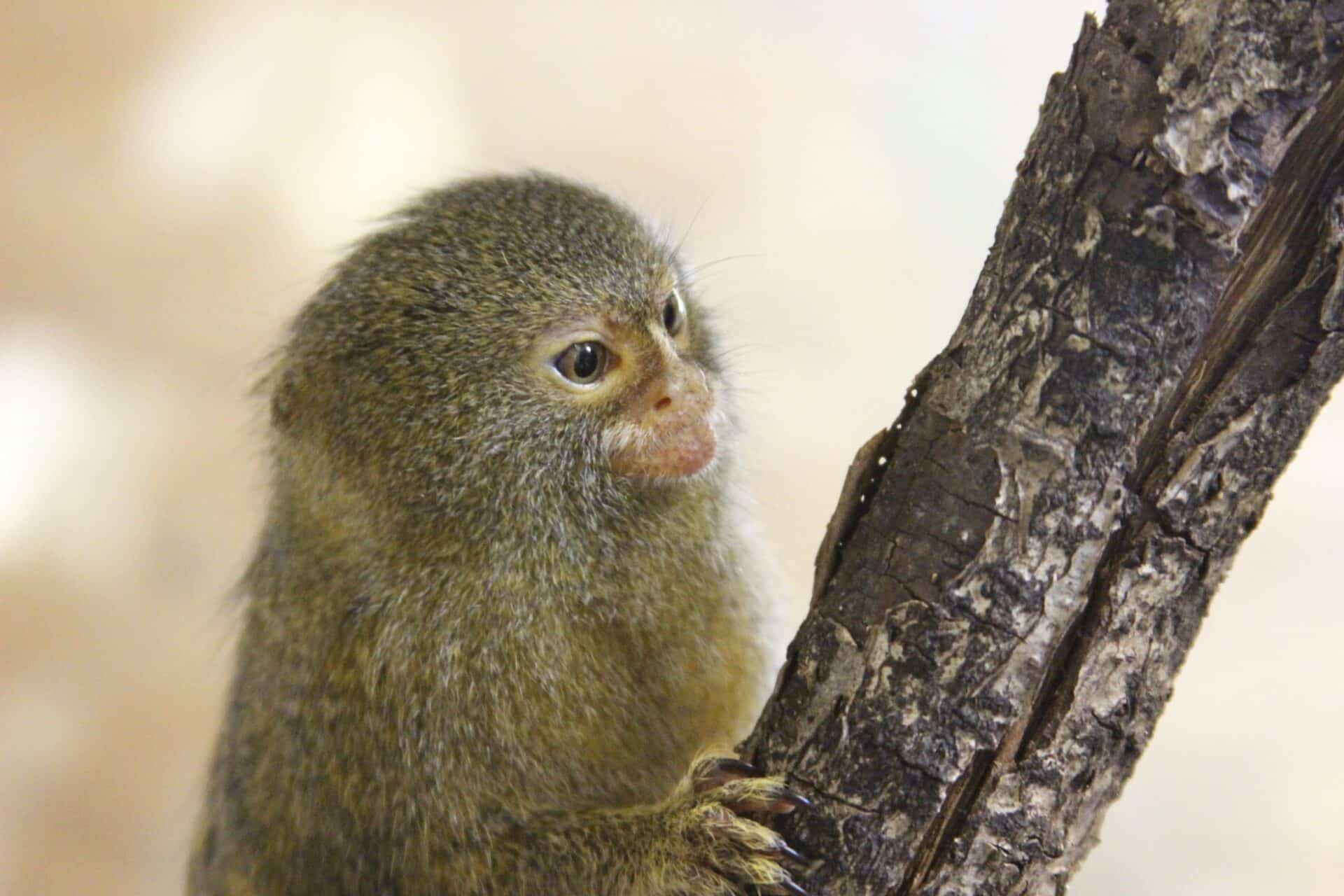Pygmy marmoset
Common Name: Pygmy marmoset
Scientific Name: Cebuella pygmaea
The pygmy marmoset is the world’s smallest monkey.
Pygmy marmosets have sharp, claw-shaped nails on all their digits except for their big toe.
Pygmy marmosets are sometimes referred to as ‘gummivores’ because gums form an important part of their diet.
Fast Facts
-
Status
Least Concern
-
Size
Head - body length: 12-16 cm; tail length: 17-23 cm
-
Weight
Males: 110 g Females: 122 g
-
Gestation
20 weeks
-
Young
Usually twins
-
Life span
11-12 years
In the wild
Pygmy marmosets mainly eat invertebrates and plant exudates (sap, gum, latex). They sometimes also eat small vertebrates such as lizards and birds. Pygmy marmosets have special dental adaptations so they can gnaw holes in the bark of certain trees and vines to stimulate gum production.
These animals are found in Peru, Bolivia, Brazil, Ecuador and Colombia. They are mostly found in river-edge forest. Pygmy marmosets generally travel in the dense vegetation of the lower layers of the forest. They forage for insects and feed in the middle layer of the forest.
Pygmy marmosets generally give birth to twins. There will be one breeding female in a group who usually gives birth twice a year. This female is dominant over all group members. Newborn pygmy marmosets weigh 13-15 g and their head to body length is 51-63mm. Pygmy marmosets are ‘cooperative breeders’ ,meaning that most group members help care for the infants, which are carried for the first 1½ to 2 months of their life. As they get older they may be left on their own for increasing periods of time as the group forages. Group members will offer food to infants while they are learning to catch their own prey. Pygmy marmosets are able to breed from about 1 ½ years of age.
It is thought that capuchin and squirrel monkeys prey on pygmy marmosets, because the marmosets give alarm calls and flee if they see them approaching. Other potential predators include hawks and falcons, forest cats and snakes.
Pygmy marmosets are common and have a fairly wide distribution range. They don’t currently face any major threats, although in some parts of their range there is localized habitat loss which may be causing some declines.


